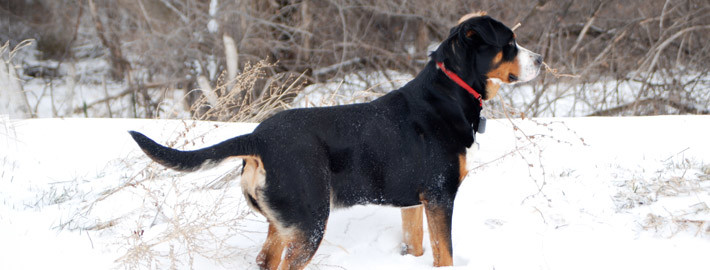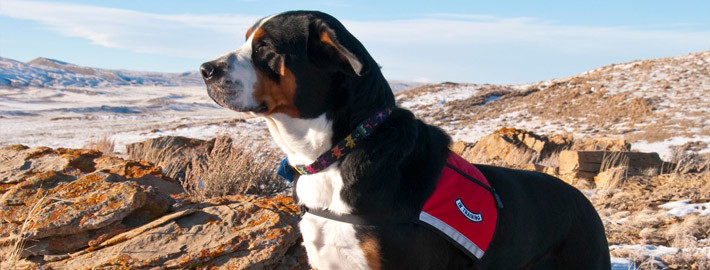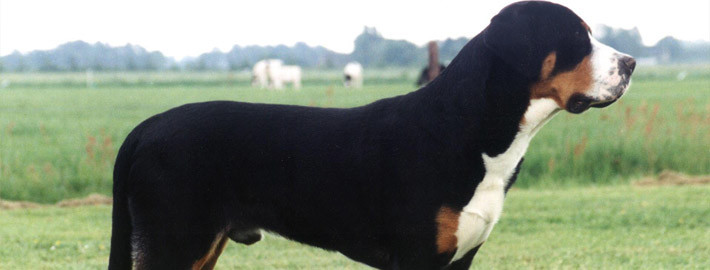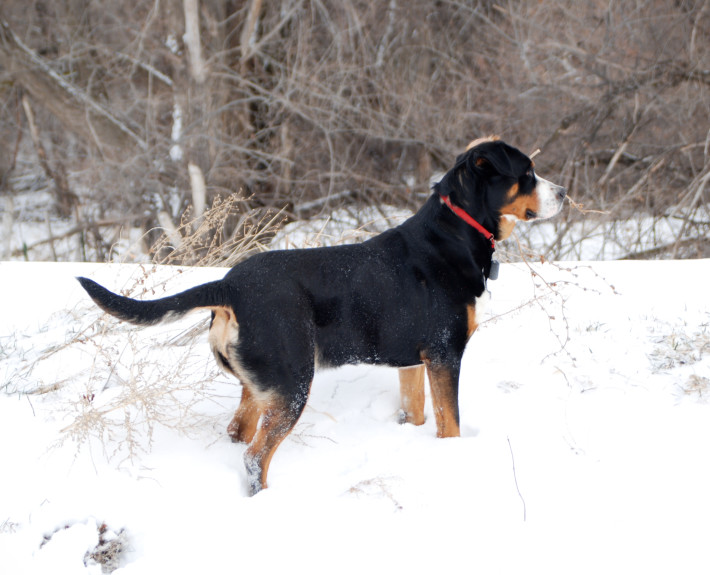What makes the Greater Swiss Mountain Dog Unique?
Native to Switzerland, this large breed of working dog is well known for its cattle herding and cart pulling abilities.
Breed Groups
Page Contents
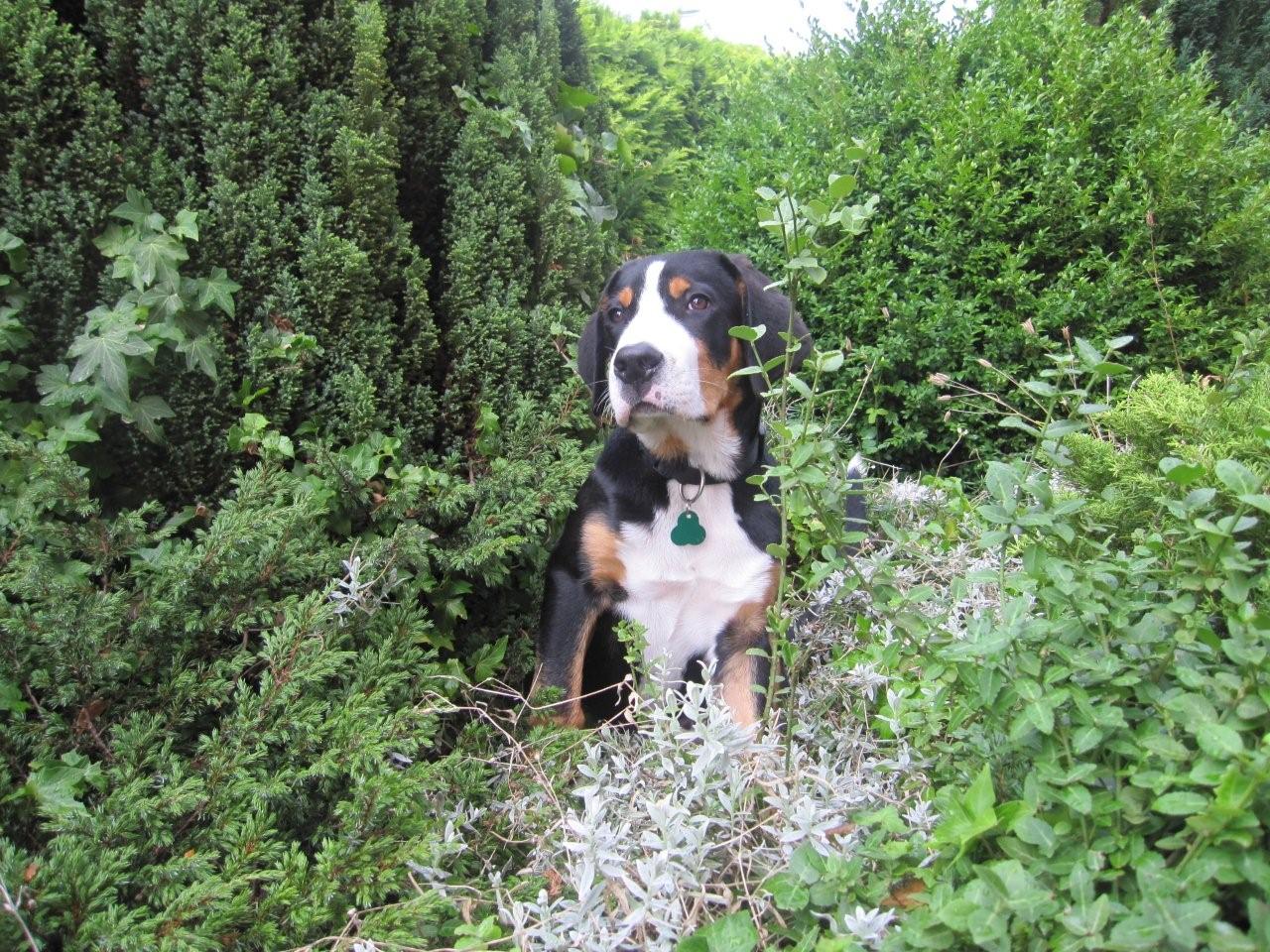
Is the Greater Swiss Mountain Dog Right For You?
Greater Swiss Mountain Dogs are devoted to their human owners. This breed is also quite protective of their family. If strangers enter the property, they will be greeted with a loud bark and the dog’s constant attention. Members of this even tempered breed are nonetheless well behaved around other pets and children. As long as these dogs have been correctly socialized, they will even get along with cats. However, Greater Swiss Mountain Dogs may experience dominance issue around members of their own breed.
They do best in rural areas where there is space for them to roam and their puppyish behavior won’t get them into trouble. House training these dogs may take a while. Although they can understand the concept in a shorter period of time, it may take a few months for them to become wholly dependable in this regard.
In 5 Words
- Devoted
- Protective
- Alert
- Fearless
- Good-natured
Characteristics
Learn About the Greater Swiss Mountain Dog
Description
General Description
Greater Swiss Mountain Dogs have sturdy bodies and an athletic appearance. Wide, deep chests are another breed feature. These dogs are somewhat longer than they are tall. Their almond-shaped eyes often have a gentle but animated expression in them. Eye colors found in this breed range from chestnut to hazel. These dogs have flat, wide skulls that come to a gradual stop. Black noses and lips are standard for this breed and their teeth should have a scissors bite. Triangular ears of a medium size are another feature on Greater Swiss Mountain dogs. These appendages should be somewhat rounded at the tips and remain close to the dog’s head. Members of this breed should have a level topline, straight front legs and rounded feet. The dewclaws on these animals will often remain in place but they will occasionally be removed. Greater Swiss Mountain Dogs also have a tapered tail that starts off thick at the base but forms a point at its end.
Size
Males of this breed stand between 25.5 and 28.5 inches high (65 and 72 centimeters) and weigh about 132.3 to 154.3 pounds (60 to 70 kilograms). Their female counterparts measure about 23.5 to 27 inches (60 to 69 centimeters) at the withers or the shoulder blades and are about 110.2 to 132.3 pounds (50 to 60 kilograms) in weight.
Coat
Greater Swiss Mountain Dogs have thick double-coat. The outer coat measures about 1 to 2 inches (3 to 5 centimeters) in length. Only tricolored varieties in black, rust, and white are accepted by the American Kennel Club. These dogs should have a black base coat with specific symmetrical markings in both white and rust hues. There should be rust colored spots on the cheeks, chest, and above the eyes. There should be white blazes on the tail, the muzzle and the chest of each dog as well.
Short History of the Greater Swiss Mountain Dog
The Greater Swiss Mountain Dog is thought to be both the oldest and largest of the four native breeds from its home country that are in existence today. These dogs may have either Mastiff or Roman Molossian dog ancestry, as such breeds often traveled with their human companions when they set out to conquer new lands. However, the precursors to the modern day Mountain Dogs could also have easily traveled with the Phoenicians from Spain in the early 1100s. Either way, both prospective forbearers quickly spread throughout Europe and produced offspring with the local canine varieties. Isolated dog types began developing as a result.
Eventually the descendants of these unions were divided up by what tasks they could perform best. The Swiss Mountain Dogs’ ancestors were used for towing wagons and carts. They were also put to work herding cattle, which earned many of them the nickname Metzgerhund or butcher’s dogs. It is thought that the four native Swiss breeds were actually the same until Professor A. Heim decided to help preserve the local dog varieties upon seeing a particular excellent specimen at a dog show. His studies in the early 1900s led to the formation of the modern Greater Swiss Mountain Dog breed in 1910.
Although the World Wars put a damper on the slowly increasing popularity of the breed, these dogs reached the United States by the late 1960s. Some fifteen years later, the American Kennel Club (AKC) classified Greater Swiss Mountain Dogs as a miscellaneous breed for show purposes. In 1995, the breed went on to become part of the organization’s working dog group.
Temperament
Greater Swiss Mountain Dogs are devoted to their human owners. This breed is also quite protective of their family. If strangers enter the property, they will be greeted with a loud bark and the dog’s constant attention. Members of this even tempered breed are nonetheless well behaved around other pets and children. As long as these dogs have been correctly socialized, they will even get along with cats. However, Greater Swiss Mountain Dogs may experience dominance issue around members of their own breed.
Caring for Your Greater Swiss Mountain Dog
General Health
Born in litters of about 6 puppies, these dogs live on average about 10 years. Minor health concerns in this breed include lick fits, distichiasis, panosteitis, torsion, seizures, female urinary incontinence, and osteochondrosis dissecans. Hip dysplasia can be a major concern for these dogs as well. Owners of Greater Swiss Mountain Dogs may want to have shoulder, elbow, and eye test performed regularly to ensure their dog’s continued health and well-being. Due to their thick coats and their propensity to overheat, the breed is not recommended for warmer climates. Prospective owners should also note that these dogs will eat anything and they should exercise greater than usual caution in keeping potentially toxic items out of their pet’s environment.
Care
Daily
Due to their status as a working breed, the Greater Swiss Mountain Dogs need plentiful exercise. Long walks are recommended on a daily basis. However, owners should be aware that these dogs can easily overheat if their activities become too strenuous.
Weekly
Brushing the dog’s coat a few times per week will help keep loose hairs from getting everywhere. It is also recommended that owners regularly clean their dog’s teeth to promote good health and encourage fresh breath.
Monthly
All dogs need flea, tick, and heartworm prevention medications on a monthly basis. Their nails should also be trimmed as needed, which is usually about twice per month.
Grooming & Bathing
The Greater Swiss Mountain Dog does not drool but members of this breed do shed throughout the year. They also go through a period of heavy shedding in the autumn and in the spring. Owners may want to invest in a shedding blade to help remove excess hair. At such times, additional brushing may be required to keep everything in the house from being covered in loose bits of fur.
Exercise & Training
Greater Swiss Mountain Dogs are too big and too active to be happy in small living quarters. They do best in rural areas where there is space for them to roam and their puppyish behavior won’t get them into trouble. House training these dogs may take a while. Although they can understand the concept in a shorter period of time, it may take a few months for them to become wholly dependable in this regard.

